I’ve listened to and been part of numerous presentations focused on how drone technology is being utilized in a variety of industries, and that’s the main reason Hector Ubiñas’ presentation at Drone World Expo last year stuck out to me so much. Rather than focus on the potential or possibilities around how the technology could impact the approach San Diego Gas & Electric (SDG&E) is able to take, he showcased the pilot program they initiated that was designed to specifically detail when and how drone technology would make their approach to a given task faster, cheaper or safer when compared to traditional methodologies.
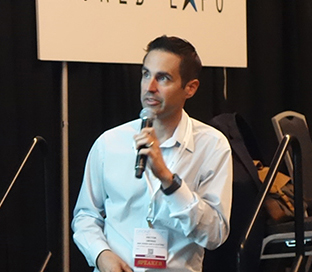
Hector Ubiñas giving his DWE presentation.
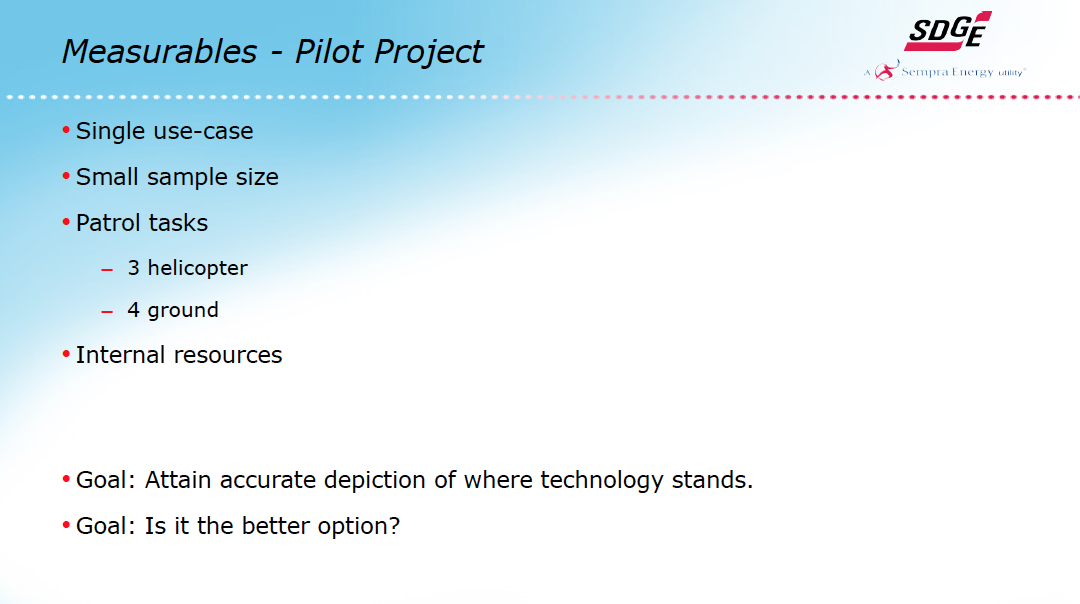 Comparing UAS crew versus a ground crew versus helicopter patrolWe’ve previously detailed the efforts SDG&E has undertaken to create and scale a drone program, and their focus on embracing all of the tools at their disposal comes back to their impressive track record around keeping the power on in the region. Covering 2 counties and 25 communities for electric power means this is no small feat, which meant their pilot program needed to specifically establish how drone technology could help when directly compared to the approaches and tools they’ve been using.The details the pilot program established in terms of the financials, reliability, efficiency and safety of drone technology allowed Ubiñas to make a confident, educated decision moving forward on the given use case. Doing so meant establishing and working off of some important assumptions.“For the UAS workflow, we assumed there would have to be at a minimum an hour of post flight data analysis, which means the job is not over once you’ve gone out into the field and collected your data,” said Ubiñas, who oversees the UAS program at SDG&E. “You have to sit down at a computer and actually look at your pictures to assess the state of a pole. For ground patrol, travel time was not accounted for because the same amount of travel time was going to be incurred for a UAS crew as there would be for ground patrol. For the helicopter patrol, when you compare it to the UAS team, the assumption was that you did have to include travel time, because the UAS crew is supposed to drive the hour and a half to the site while the helicopter can get there in 20 minutes. Those are just some of the timing assumptions though.”The pilot program also assumed the UAS crew would include two people, a PIC and observer. What wasn’t assumed was having a Qualified Electrical Worker (QEW) in the field to interpret the information being gathered by the drone. It was assumed that the QEW would interpret the data back at the office, which means there could be some efficiencies with having that QEW out in the field.Of course, having the QEW out there in the field saves on the post analysis time, but if the job takes four hours, that's four hours of their time versus one hour back at the office when they could be doing other things. Which approach will ultimately create more efficiency? How does that calculation change if the pilot can also function as the QEW?Asking these kinds of detailed questions have allowed SDG&E to develop a strategy around how they should be deploying drones, and these details underscore what it means to figure out the best way to deploy the tools at their disposal. They’re distinctions that directly influence cost and efficiency when comparing one approach to another.
Comparing UAS crew versus a ground crew versus helicopter patrolWe’ve previously detailed the efforts SDG&E has undertaken to create and scale a drone program, and their focus on embracing all of the tools at their disposal comes back to their impressive track record around keeping the power on in the region. Covering 2 counties and 25 communities for electric power means this is no small feat, which meant their pilot program needed to specifically establish how drone technology could help when directly compared to the approaches and tools they’ve been using.The details the pilot program established in terms of the financials, reliability, efficiency and safety of drone technology allowed Ubiñas to make a confident, educated decision moving forward on the given use case. Doing so meant establishing and working off of some important assumptions.“For the UAS workflow, we assumed there would have to be at a minimum an hour of post flight data analysis, which means the job is not over once you’ve gone out into the field and collected your data,” said Ubiñas, who oversees the UAS program at SDG&E. “You have to sit down at a computer and actually look at your pictures to assess the state of a pole. For ground patrol, travel time was not accounted for because the same amount of travel time was going to be incurred for a UAS crew as there would be for ground patrol. For the helicopter patrol, when you compare it to the UAS team, the assumption was that you did have to include travel time, because the UAS crew is supposed to drive the hour and a half to the site while the helicopter can get there in 20 minutes. Those are just some of the timing assumptions though.”The pilot program also assumed the UAS crew would include two people, a PIC and observer. What wasn’t assumed was having a Qualified Electrical Worker (QEW) in the field to interpret the information being gathered by the drone. It was assumed that the QEW would interpret the data back at the office, which means there could be some efficiencies with having that QEW out in the field.Of course, having the QEW out there in the field saves on the post analysis time, but if the job takes four hours, that's four hours of their time versus one hour back at the office when they could be doing other things. Which approach will ultimately create more efficiency? How does that calculation change if the pilot can also function as the QEW?Asking these kinds of detailed questions have allowed SDG&E to develop a strategy around how they should be deploying drones, and these details underscore what it means to figure out the best way to deploy the tools at their disposal. They’re distinctions that directly influence cost and efficiency when comparing one approach to another.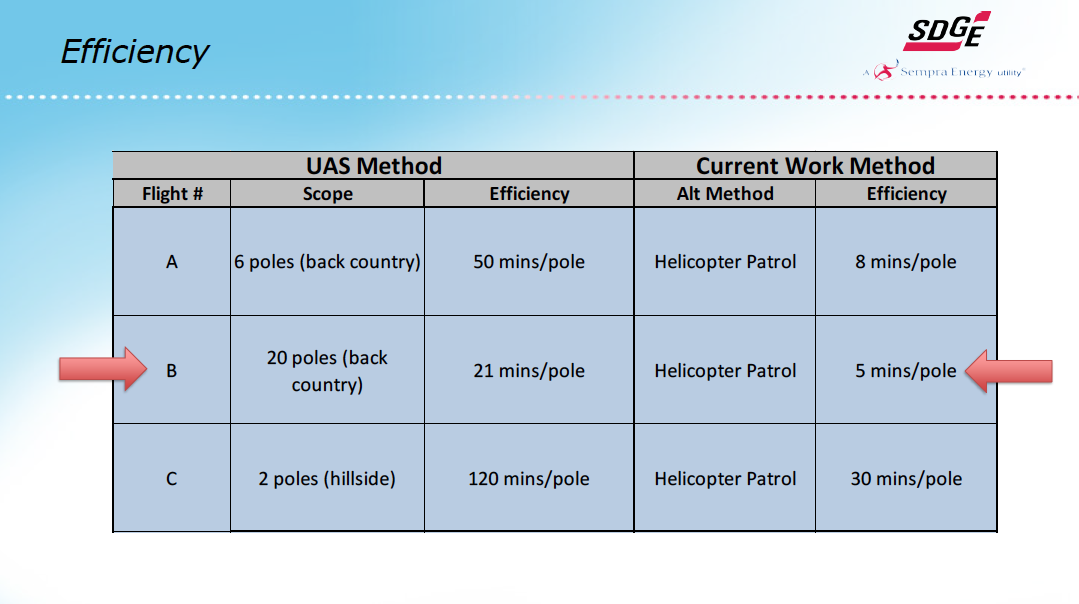 Strategy & Efficiency We’ve often talked about thinking of drones as another tool in the toolkit in terms of using the technology when it makes sense to use it, and using something else when it makes sense to take a different approach. What’s the best way to figure out what to use and when though? SDG&E’s pilot program was designed to determine exactly that.Their efforts to compare UAS versus helicopters show the distinction in approaches in plain detail, and demonstrate how UAS can be competitive for them in small scope work, but pushes back on many of the assumptions that come with the technology. Many people think you can take a drone out and get the same thing as a helicopter, but they don't take into account the two-hour drive to get to a location, and the two hours it takes to return. Being able to consider these details has allowed them to develop a strategy around when drones make sense to deploy, and when it doesn’t.“Right now, we really have to be strategic in where we employ the UAS, because it's not a blanket solution,” Ubiñas told Commercial UAV News. “The speed of the helicopter is critical, because time is money. Additionally, the ground control guys have been doing this work for years, so they’re really fast. That’s not to say the drone team can't handle those tasks, but there are other factors, especially when you consider the environment. In rough terrain you’re going to see the safety benefits which impact the value proposition, but in an urban environment, you don’t have those same benefits.”Assumptions and details related to the time it takes just to get people and equipment in position are often glossed over whenever talk about drone efficiency comes up, but time is money both in terms of salaries and what kind of financial impact occurs every minute power is out. Being able to repair issues as quickly as possible, even if that means utilizing a helicopter, can provide more value because of the speed associated with this approach.The time it takes to capture the necessary data isn’t the only factor though. How much time is being spent to process all this information is just as critical, and the pilot program demonstrated why a conscious effort to be disciplined about what’s being captured is so critical.
Strategy & Efficiency We’ve often talked about thinking of drones as another tool in the toolkit in terms of using the technology when it makes sense to use it, and using something else when it makes sense to take a different approach. What’s the best way to figure out what to use and when though? SDG&E’s pilot program was designed to determine exactly that.Their efforts to compare UAS versus helicopters show the distinction in approaches in plain detail, and demonstrate how UAS can be competitive for them in small scope work, but pushes back on many of the assumptions that come with the technology. Many people think you can take a drone out and get the same thing as a helicopter, but they don't take into account the two-hour drive to get to a location, and the two hours it takes to return. Being able to consider these details has allowed them to develop a strategy around when drones make sense to deploy, and when it doesn’t.“Right now, we really have to be strategic in where we employ the UAS, because it's not a blanket solution,” Ubiñas told Commercial UAV News. “The speed of the helicopter is critical, because time is money. Additionally, the ground control guys have been doing this work for years, so they’re really fast. That’s not to say the drone team can't handle those tasks, but there are other factors, especially when you consider the environment. In rough terrain you’re going to see the safety benefits which impact the value proposition, but in an urban environment, you don’t have those same benefits.”Assumptions and details related to the time it takes just to get people and equipment in position are often glossed over whenever talk about drone efficiency comes up, but time is money both in terms of salaries and what kind of financial impact occurs every minute power is out. Being able to repair issues as quickly as possible, even if that means utilizing a helicopter, can provide more value because of the speed associated with this approach.The time it takes to capture the necessary data isn’t the only factor though. How much time is being spent to process all this information is just as critical, and the pilot program demonstrated why a conscious effort to be disciplined about what’s being captured is so critical.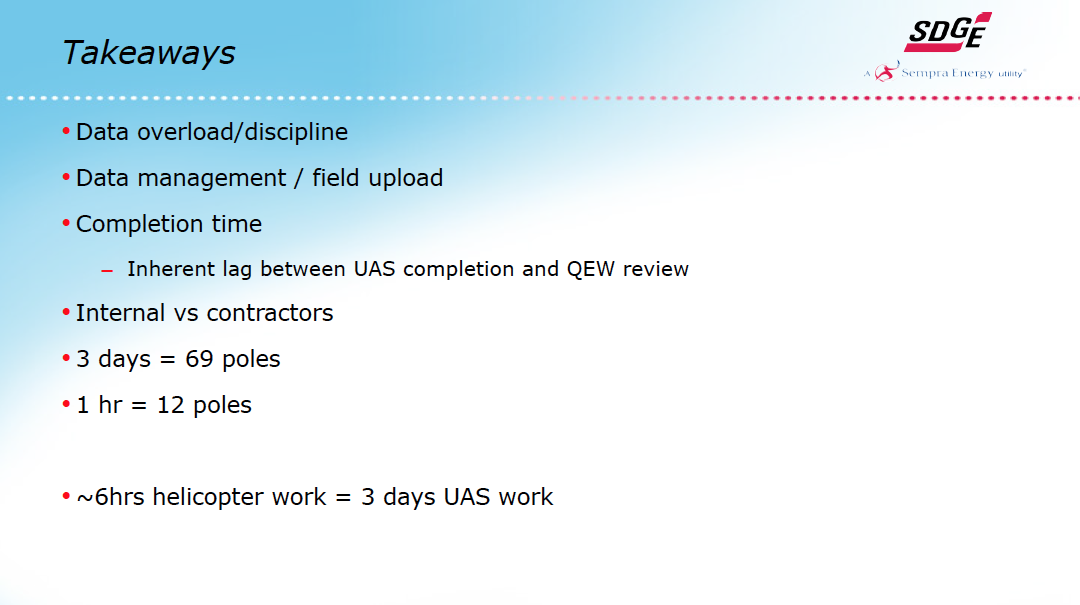 The Importance of Data DisciplineOne of the major benefits of utilizing drone technology is that it allows organizations to create a record of the condition of various pieces of equipment. Many SDG&E inspectors are currently doing visual inspections without taking any pictures, which means drones can create a permanent record when they capture the information required for an inspection. This allows an organization to refer back to the condition of a variety of pieces of infrastructure, but there are dangers with being undisciplined when creating these kinds of records.“You can't just go out there and grab data,” Ubiñas explained. “It's tempting to take 50 pictures of the same pole at a variety of angles, and with a drone it’s easy enough to do just that. But then all of the sudden you have 500 pictures when you only really need 10, and you have a mess on your hands. It’s critical that you establish the data discipline to only capture the essential amount of pictures that you need, and no more.”Even when limiting themselves to 4 pictures for a pole, things add up quickly. That underscores the importance of having a data management tool ready to ingest everything and organize it. It’s a point that illustrates data discipline isn’t just about taking only the necessary amount of pictures, but also having that data management piece figured out so that everything can be easily organized, distributed and referenced.The efficiencies SDG&E has been able to create on account of having this kind of data discipline in place has been calculated to an exact figure, but they’ve already been able to consider how capabilities related to machine learning and AI will further augment these efficiencies. Being able to utilize software and algorithms that will be able to identify broken insulators or strands that are frayed opens up an entirely new value proposition, and this pilot program puts them in a unique position to take advantage of those opportunities.
The Importance of Data DisciplineOne of the major benefits of utilizing drone technology is that it allows organizations to create a record of the condition of various pieces of equipment. Many SDG&E inspectors are currently doing visual inspections without taking any pictures, which means drones can create a permanent record when they capture the information required for an inspection. This allows an organization to refer back to the condition of a variety of pieces of infrastructure, but there are dangers with being undisciplined when creating these kinds of records.“You can't just go out there and grab data,” Ubiñas explained. “It's tempting to take 50 pictures of the same pole at a variety of angles, and with a drone it’s easy enough to do just that. But then all of the sudden you have 500 pictures when you only really need 10, and you have a mess on your hands. It’s critical that you establish the data discipline to only capture the essential amount of pictures that you need, and no more.”Even when limiting themselves to 4 pictures for a pole, things add up quickly. That underscores the importance of having a data management tool ready to ingest everything and organize it. It’s a point that illustrates data discipline isn’t just about taking only the necessary amount of pictures, but also having that data management piece figured out so that everything can be easily organized, distributed and referenced.The efficiencies SDG&E has been able to create on account of having this kind of data discipline in place has been calculated to an exact figure, but they’ve already been able to consider how capabilities related to machine learning and AI will further augment these efficiencies. Being able to utilize software and algorithms that will be able to identify broken insulators or strands that are frayed opens up an entirely new value proposition, and this pilot program puts them in a unique position to take advantage of those opportunities.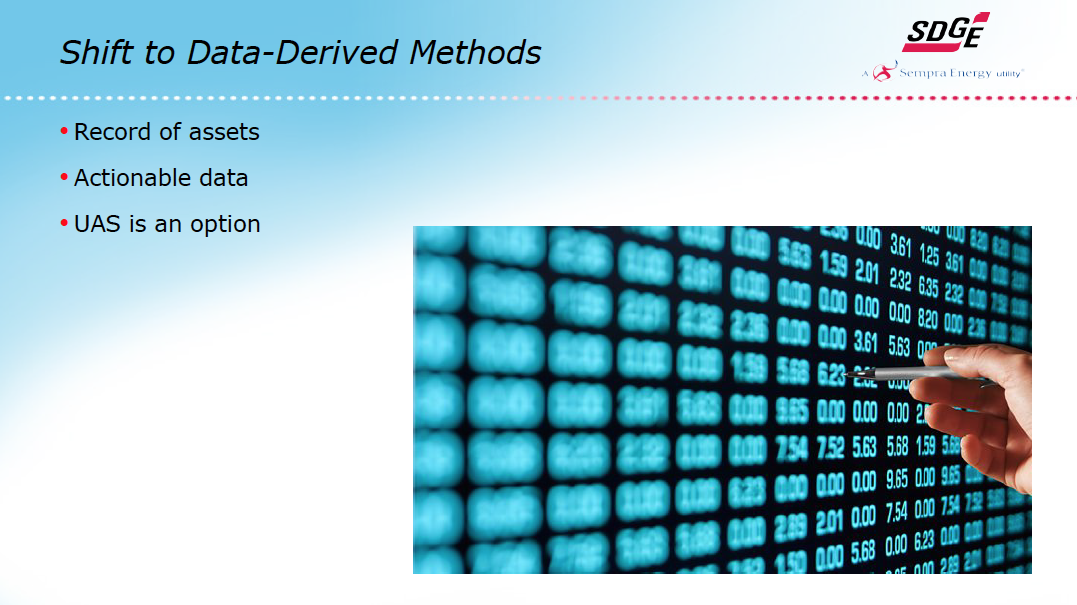 What’s the Value Proposition for Your Organization?Organizations of all sizes and types are working to figure out what works best for them when it comes to drone adoption, and that’s the main reason SDG&E’s pilot program is so important to highlight. Their examination of issues related to cost-savings, efficiency, safety, reliability, capability and environment have clarified where and how the technology can benefit them in the present, but they know consistent savings on cost is something that’s going to happen in the future. That’s a value proposition that works for their organization, but is that enough for stakeholders elsewhere to seriously look at adoption or put together their own pilot program?“Our pilot program allowed us to get very specific with the benefits UAS would be able to provide us,” Ubiñas said. “It proved UAS is not a blanket solution, and it also told us that right now, and for utilities specifically, our UAS missions need to focus on areas that are hard to access, that don’t require quick turnaround times, and that can increase safety. Anyone considering adoption needs to be able to tackle similar specifics in order to help your case to your organization.”SDG&E’s pilot program is an incredible example of what it means to consider how drone adoption can and should be approached at a macro and micro level. While the value and measurables they were able to document won’t be the same for other organizations that are working under different assumptions, in different environments, and within different industries, the lessons here are as insightful as they are eye opening.Effectively defining the value proposition of drone technology for an organization stems from dedicated efforts to look at comparisons like the ones SDG&E laid out. No matter how well those comparisons are outlined though, advocates need to remember that technology and regulation will continue to evolve and change these value propositions. Some might use that as a reason to hold off on adoption, but making an investment around understanding where drones can work is the only way to really understand what kind of a difference the technology can make in the present and future.
What’s the Value Proposition for Your Organization?Organizations of all sizes and types are working to figure out what works best for them when it comes to drone adoption, and that’s the main reason SDG&E’s pilot program is so important to highlight. Their examination of issues related to cost-savings, efficiency, safety, reliability, capability and environment have clarified where and how the technology can benefit them in the present, but they know consistent savings on cost is something that’s going to happen in the future. That’s a value proposition that works for their organization, but is that enough for stakeholders elsewhere to seriously look at adoption or put together their own pilot program?“Our pilot program allowed us to get very specific with the benefits UAS would be able to provide us,” Ubiñas said. “It proved UAS is not a blanket solution, and it also told us that right now, and for utilities specifically, our UAS missions need to focus on areas that are hard to access, that don’t require quick turnaround times, and that can increase safety. Anyone considering adoption needs to be able to tackle similar specifics in order to help your case to your organization.”SDG&E’s pilot program is an incredible example of what it means to consider how drone adoption can and should be approached at a macro and micro level. While the value and measurables they were able to document won’t be the same for other organizations that are working under different assumptions, in different environments, and within different industries, the lessons here are as insightful as they are eye opening.Effectively defining the value proposition of drone technology for an organization stems from dedicated efforts to look at comparisons like the ones SDG&E laid out. No matter how well those comparisons are outlined though, advocates need to remember that technology and regulation will continue to evolve and change these value propositions. Some might use that as a reason to hold off on adoption, but making an investment around understanding where drones can work is the only way to really understand what kind of a difference the technology can make in the present and future.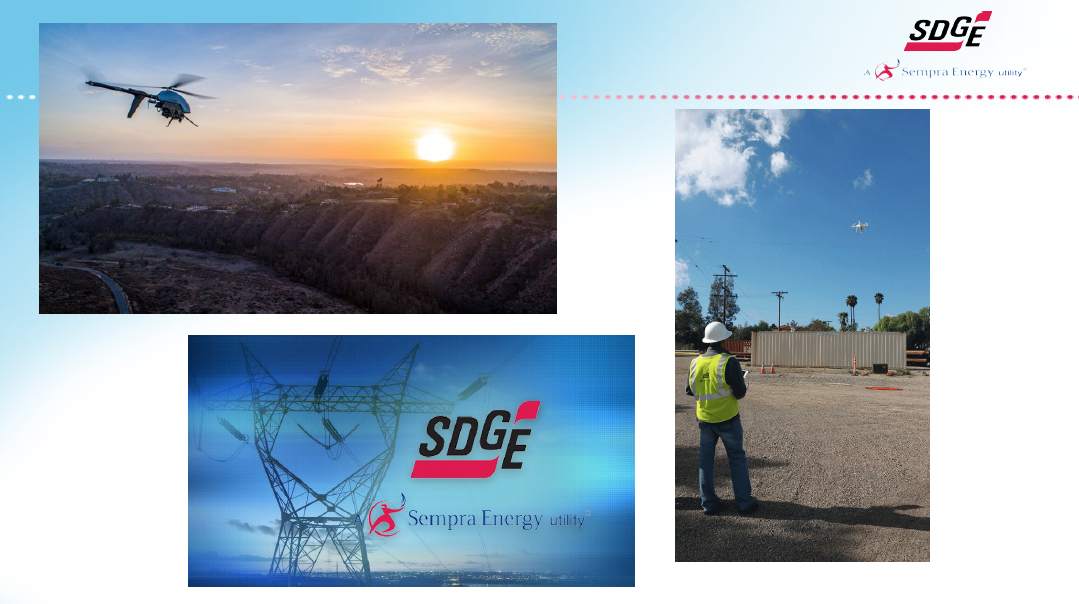


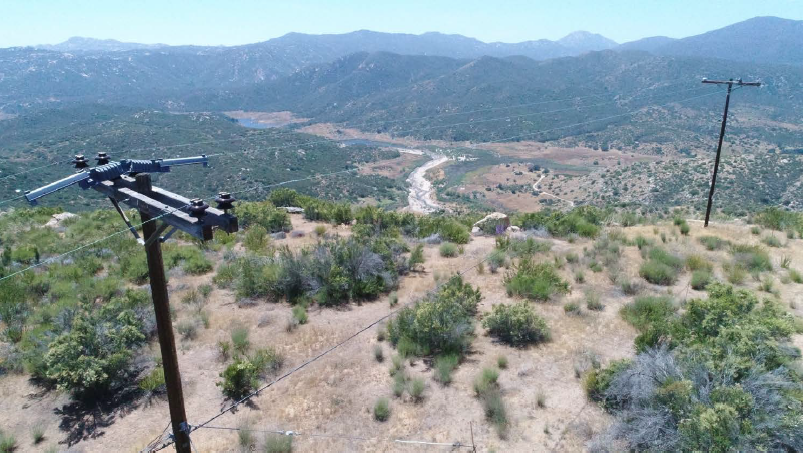












Comments